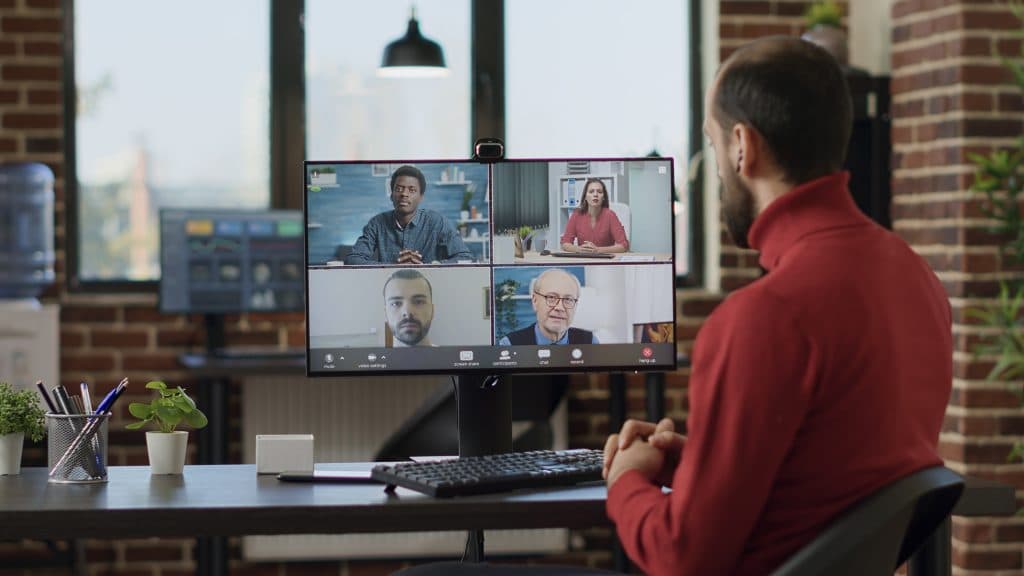Most Popular Cybersecurity Mistakes and How to Avoid Them
Learn about the most common cybersecurity errors and effective avoidance strategies in our guide. Protect your digital assets today!
Cybersecurity is a critical aspect of modern life, especially in a world where digital transactions and interactions dominate. As technology advances, so do the tactics of cybercriminals seeking to exploit vulnerabilities. In this article, we’ll explore most popular cybersecurity mistakes and point out how to avoide them.
Understanding Cybersecurity
Despite the frequent use of the term “cybersecurity” there remains a lack of understanding among many individuals regarding its significance. Fully understanding concept of cybersecurity represents initial step in protecting any company and adhering to a solid cybersecurity protocol.
What is Cybersecurity?
Cybersecurity is the practice of protecting computers, networks, servers and other digital systems from unauthorized physical and remote hacker access such as data breaches, malicious attacks and other stealthy intrusion tactics. It includes diverse strategies aimed at maintaining the integrity, confidentiality and availability of digital assets and data.
Today, there is a wide range of cyber threats. As a result, companies must be aware of various types to completely understand cybersecurity. This include transition from traditional anti-virus solutions to more complex anti-virus technologies of popular cyber threats like viruses, malware and phising.
Importance of Cybersecurity
In an era where data is vital to businesses and the internet is ingrained in nearly everyone’s daily routines, protecting sensitive information and ensuring data security are vital. Cybersecurity plays a pivotal role in protecting both personal and business data from complex adversaries and cybercriminals.
Efforts in cybersecurity play a crucial role. They prevent unauthorized access to systems, data breaches, and identity theft. These efforts uphold the confidentiality and integrity of private data. In the professional sphere, the repercussions of a data breach can be severe. As of 2022, the average cost of a data breach for a company stands at $4.45 million.
This includes expenses that often go unnoticed by leaders. These expenses include legal consequences, damage to reputation and remedial actions. A single data breach has the potential to dismantle an entire company. It results not only in substantial financial losses but also in the erosion of customer trust. Consequently, investing in robust cybersecurity measures is vital for companies. They should avoid relying solely on antivirus software to mitigate risks and safeguard themselves.
Most Popular Cybersecurity Mistakes
Sometimes, companies invest in top-tier firewalls and security software but overlook internal threats within their own office. These threats frequently establish as common cybersecurity mistakes made by the company’s own employees, which could easily be prevented.
Using Weak or Recycled Passwords
Using identical passwords for multiple accounts makes it easy to remember but it also facilitates access for hackers and cybercriminals. Weak passwords leave systems and accounts susceptible to brute-force attacks, where hackers systematically attempt various word combinations to infiltrate private accounts. Research indicates that more than 80% of data breaches stem from inadequate password practices.
Ignoring Software Updates
The persistent reminders for software updates serve a purpose beyond merely irritating users. Software companies encourage users to upgrade to the latest versions for their own protection. Disregarding these updates leaves systems vulnerable to security breaches as outdated software often harbors known vulnerabilities exploitable by hackers. These updates are designed to fix such vulnerabilities.
Cybercriminals frequently seek out and exploit systems running outdated software, exploiting their unpatched security flaws. These attacks can lead to substantial data breaches, reputational harm and financial repercussions.
Falling for Phising Scams
In a phishing scheme, cybercriminals employ deceptive tactics to dupe individuals into divulging sensitive information such as credit card details, passwords and even social security numbers. These scams typically manifest through fraudulent emails, text messages, or manipulative websites. Phishing scams are often successful due to their convincing nature, aided by social engineering techniques that exploit human vulnerabilities. The 2017 “Google Docs” phishing attack serves as a prime example of an exceptionally effective phishing scam.
Not Using Multi-Factor Authentication
MFA, or Multi-Factor Authentication, enhances the security of online accounts. It does so by requiring users to provide multiple forms of identification for identity verification. Typically, MFA involves a combination of a password, a physical possession like a security token or smartphone. It can also include a biometric factor such as fingerprint or facial recognition. This multi-layered approach significantly lowers the risk of a breach, even if a password is compromised.
However, some individuals may overlook using MFA due to its inconvenience and time-consuming nature, as it involves verifying identity through multiple stages and modes. Nonetheless, employing this additional form of identification greatly diminishes the likelihood of cybercriminals gaining unauthorized access to accounts.
Insufficient Employee Training
Companies often invest in top-tier security equipment and systems, yet they overlook the fact that people represent one of their greatest cyber threats. Inadequate employee training stands out as a major contributor to security breaches. Human error consistently emerges as a significant factor in cybersecurity incidents.
Employees who lack understanding or awareness of security best practices may inadvertently become victims of phishing scams. They might also click on malicious links or mishandle sensitive data. According to the Global Risks Report of 2022, human error has played a role in 95% of cybersecurity threats in some capacity.
How to Avoid Popular Cybersecurity Mistakes
There are straightforward methods for companies to prevent becoming targets of major hacking incidents or phishing campaigns. By implementing relatively simple yet highly effective measures, companies can mitigate their risks while empowering employees to protect themselves and their employers.
Using Strong, Unique Passwords
Companies should encourage employees to use distinctivem strong passwords. Recommended practices involve incorporating a mix of letters, numbers, symbols and capitalization. Passwords should steer clear of easily guessable or readily accessible information and necessitate regular updates. Another beneficial approach is utilizing a password manager to securely organize and store passwords across various accounts or even multiple companies.
Updating Software Frequently
Guaranteeing software remains updated with newest patches is vital for users and companies to protect themselves from cyber threats. Companies should encourage employees to active automation update, use trusted update sources, check for updates frequently to maintain software is updated. Additionally, some software provides its own patch management tools tailored for company use.
Researching about Phising Scams
To avoid falling victim to phishing scams, individuals must learn to identify their characteristics and understand common indicators. This includes maintaining skepticism towards emails and messages, scrutinizing URLs for unusual spelling, refraining from clicking on unfamiliar links and refraining from sharing personal, financial or business information through unauthorized channels. Additionally, companies should advise their employees to utilize antivirus software, activate spam filters and stay informed about emerging phishing tactics.
Adopting Multi-factor Authentication
Companies should encourage their employees to adopt multi-factor authentication. While logging in with MFA requires additional time and effort, it significantly lowers the risk of hackers infiltrating an account. To activate MFA, most systems or software prompt users to access their account settings, opt for MFA or two-factor authentication, and select a method such as email, SMS or an authenticator app.
Providing Training for Employees
Today, organizing trainings for employees is one of the most effective methods to protect organizations, their data and reputation. Leaders should implement comprehensive training programs including areas such as data protection, emerging phishing threats and password security. Through this approach, leaders can cultivate a culture of cybersecurity awareness, equip employees with the necessary knowledge to mitigate cyber threats.
Conclusion
In today’s interconnected digital landscape, cybersecurity is not just a concern but a necessity. The prevalence of cyber threats and the potential consequences of security breaches underscore the importance of proactive cybersecurity measures. By addressing the most common cybersecurity mistakes outlined in this article and implementing solid security practices, individuals and organizations can better protect themselves from evolving cyber threats.
At 8Seneca, we specialize in delivering tailored B2B services, particularly focusing on IT outsourcing solutions. If you’re in need of IT outsourcing services, feel free to contact us. Additionally, we’re actively looking for motivated Interns to join our team. Explore our recruitment center for details on open positions and potential career opportunities.
Related Articles

Jul 22, 2025
Read more
The Cost of Hiring the Wrong Developer (and How to Avoid It)
A bad developer hire can cost you time, money, and trust. Here's how to spot red flags early—and avoid hiring the wrong developer.

Jul 16, 2025
Read more
How to Hire Remote Developers: Your Ultimate Guide
Hire remote developers with ease. Find where to locate top remote developers and vet them right in this guide.

Jul 14, 2025
Read more
CASE STUDY: Making Digital Screens Work Together Perfectly
8Seneca fixed Android display synchronization for a retail client with a simple, effective solution. Download the full case study.

Jul 08, 2025
Read more
Python for Business: How It Saves You Money and Time
Save money & time with Python development for your business. Learn how efficient Python software helps companies grow faster.

Jun 30, 2025
Read more
Digital Transformation for Business: What You Need to Know
Mastering digital transformation for your business. Get clear steps for tech adoption, growth, and a secure future.

Jun 25, 2025
Read more
The Ultimate Guide to Hiring Remote Developers for Your Tech Team.
Learn to hire remote developers successfully. Discover benefits, overcome challenges, and find top global tech talent with 8Seneca's guide.
